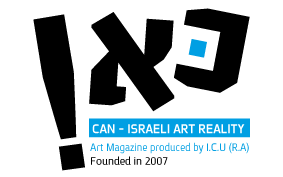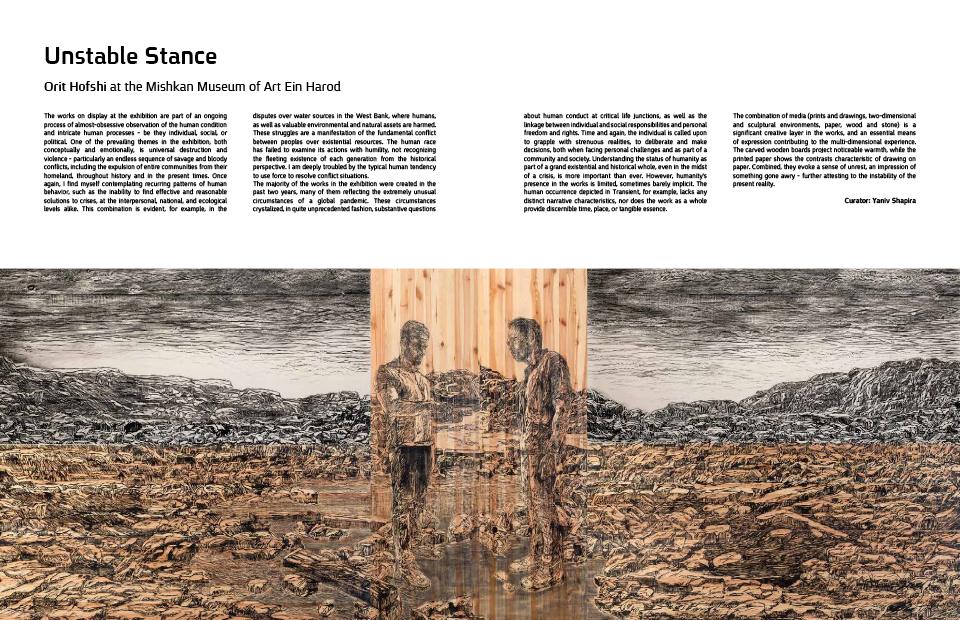
| Home Page | Editor Notices | Museums | Galleries | Publication | Donation | Contact Us |


 | |||||||||||||||
| |||||||||||||||


| |||||||||||||||
| Unstable Stance / Orit Hofshi at the Mishkan Museum of Art Ein Harod |
The works on display at the exhibition are part of an ongoing process of almost-obsessive observation of the human condition and intricate human processes – be they individual, social, or political. One of the prevailing themes in the exhibition, both conceptually and emotionally, is universal destruction and violence – particularly an endless sequence of savage and bloody conflicts, including the expulsion of entire communities from their homeland, throughout history and in the present times. Once again, I find myself contemplating recurring patterns of human behavior, such as the inability to find effective and reasonable solutions to crises, at the interpersonal, national, and ecological levels alike. This combination is evident, for example, in the disputes over water sources in the West Bank, where humans, as well as valuable environmental and natural assets are harmed. These struggles are a manifestation of the fundamental conflict between peoples over existential resources. The human race has failed to examine its actions with humility, not recognizing the fleeting existence of each generation from the historical perspective. I am deeply troubled by the typical human tendency to use force to resolve conflict situations. The majority of the works in the exhibition were created in the past two years, many of them reflecting the extremely unusual circumstances of a global pandemic. These circumstances crystalized, in quite unprecedented fashion, substantive questions about human conduct at critical life junctions, as well as the linkage between individual and social responsibilities and personal freedom and rights. Time and again, the individual is called upon to grapple with strenuous realities, to deliberate and make decisions, both when facing personal challenges and as part of a community and society. Understanding the status of humanity as part of a grand existential and historical whole, even in the midst of a crisis, is more important than ever. However, humanity’s presence in the works is limited, sometimes barely implicit. The human occurrence depicted in Transient, for example, lacks any distinct narrative characteristics, nor does the work as a whole provide discernible time, place, or tangible essence. The combination of media (prints and drawings, two-dimensional and sculptural environments, paper, wood and stone) is a significant creative layer in the works, and an essential means of expression contributing to the multi-dimensional experience. The carved wooden boards project noticeable warmth, while the printed paper shows the contrasts characteristic of drawing on paper. Combined, they evoke a sense of unrest, an impression of something gone awry – further attesting to the instability of the present reality. Curator: Yaniv Shapira Read more  |
| all rights reserved - CAN ISRAELI ART REALITY |
| סייבורג מחשבים - בניית אתרים |